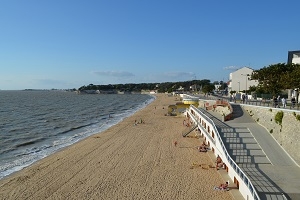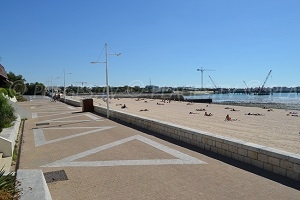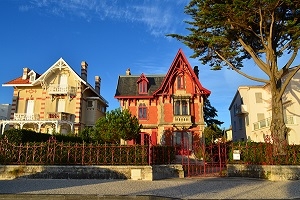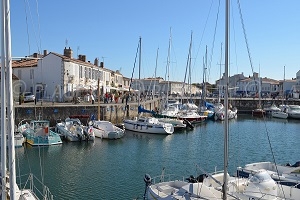Where to go on holiday on the island of Oléron ?
30 kilometres long and 12 kilometres wide, beaches, marshes and forests, here is what Oleron Island consists of, the jewel of the Charente-Maritime, which attracts many visitors. You reach the island via a free bridge of more than 3 kilometres. Once there, activities abound. The walks in the white, grey and wooded dunes, are a real pleasure without forgetting the beautiful beaches of the Atlantic.
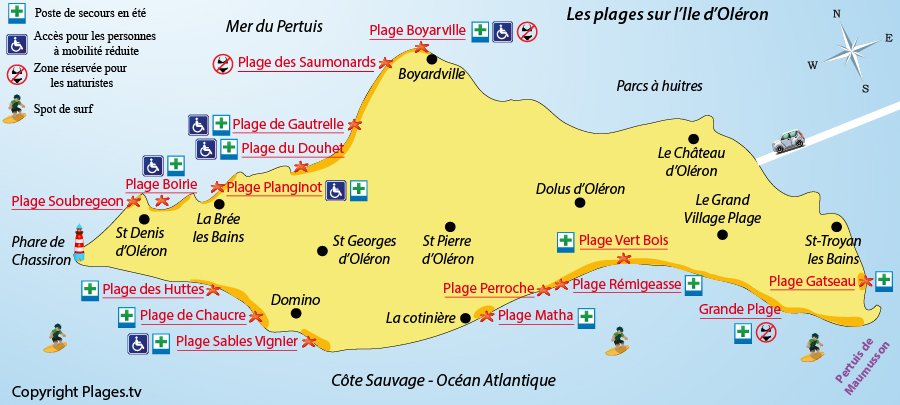
Map of the beaches on Oléron island
You can also opt for a little sunbathing on one of the beautiful sandy beaches while exploring the villages: Le Château, Saint Denis, Saint Trojan and La Cotinières with its fishing port are among those not to miss.
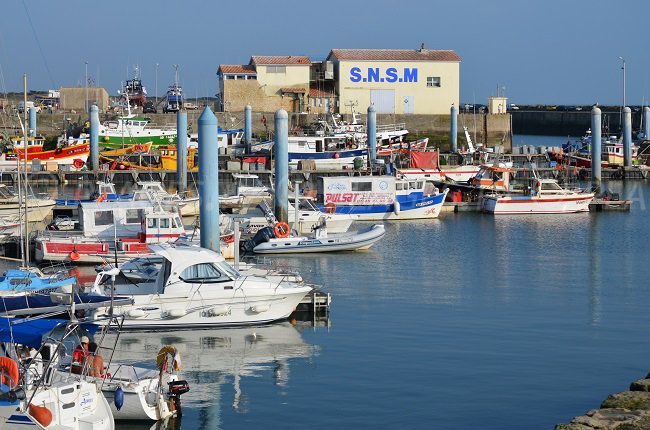
Port of Cotinière - ideal to buy fish and shrimps
In all, 15 towns are just waiting to deliver their heritage. Nature lovers should go to Trojan, with its 2,000 hectares of pine and oak forest. The nearby salt marshes host the famous "Marenne-Oléron” oysters. You'll no doubt notice that the Pineau des Charentes vines are cut low so that they are protected from the salty winds.
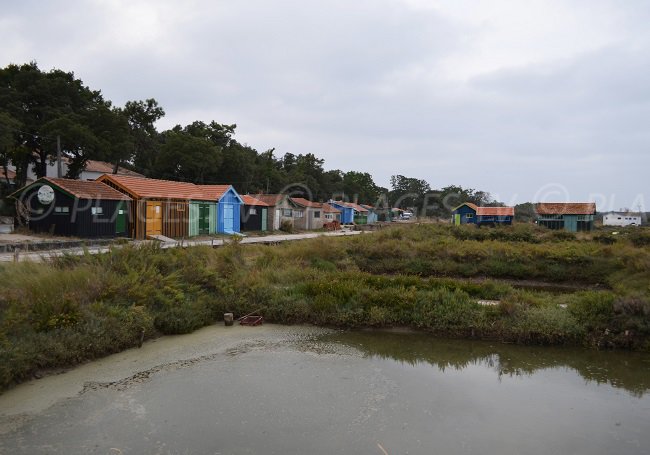
Oyster farm Fort Royer in St Pierre d'Oléron
Having taken advantage of the fashion for sea bathing in the nineteenth century, Oleron Island has charmed visitors by its scenery that changes with the seasons. If the summer season seems the ideal time to discover it, the end of winter promises beautiful surprises, with the blooming mimosa! The mild climate makes it possible to create a bright spot with a thousand colours. During the summer season, it is the oleanders that take over.
The beaches of Oléron
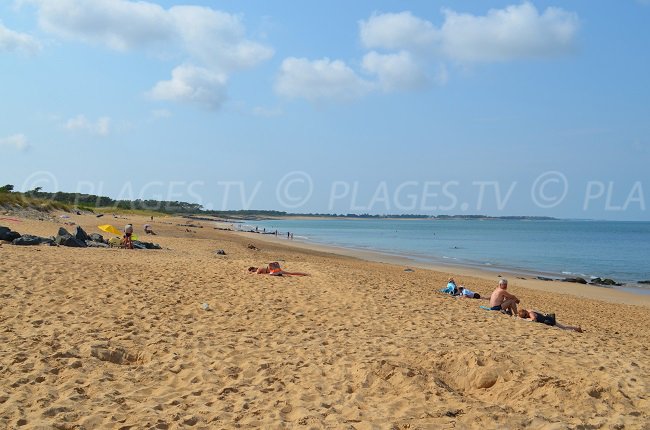
Wide beach of Saumonards
Largest island in the Atlantic coast, the beaches of Oléron are the delight of sports enthusiasts. Here you can learn kitesurfing, sand yachting and kayaking, not to mention sailing. The Saumonards Beach, on the east coast, is known to be the most beautiful of the island with the Grande Beach in Saint Trojan les Bains. Those who prefer the Atlantic waves will head instead to the Dolus beaches in Oléron or Saint Troyan les Bains beaches. They are huge and lined by large dunes and pine forests. Families prefer the beaches of La Bree les Bains and the beaches of St Georges in the north. This gives you the advantage of having the choice between the sea side beaches of Pertuis (quieter but the tides are more pronounced) and the Atlantic side beaches (more agitated but tides are less pronounced).
Enjoy your stay to take a rendezvous in a thalassotherapy centre before returning to browse, on horseback or cycling, the forests that cover it. Proud of its unspoilt nature, Oleron Island has two Nature poles, "Le Marais aux oiseaux" in Dolus and "The Port des Salines" in Grand-Village, superb sites whose visit is imperative if you want learn about the wildlife within it.
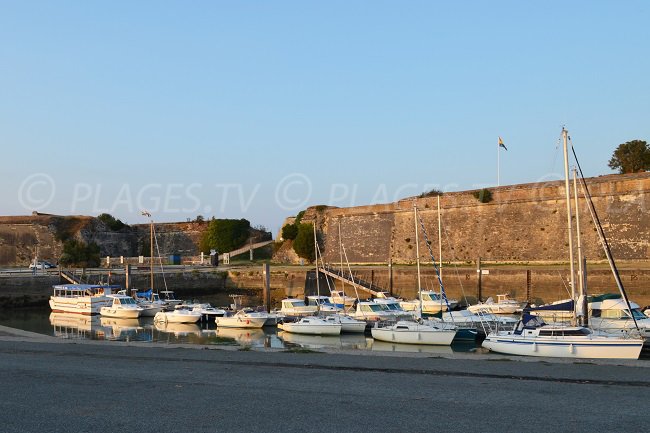
The port and the ramparts of the citadel of Chateau d’Oléron
The island's heritage is also exceptional. The citadels of the Château-d'Oléron and Brouage testify it. The first, built in 1630, was modernised by Vauban. It overlooks the ocean on one side and marshland on the other. Its Royal Gate has retained Richelieu's coat of arms. The second, founded by Jacques Pons in 1555 is at the heart of the marsh, and was for a long time the major port (outside the island).
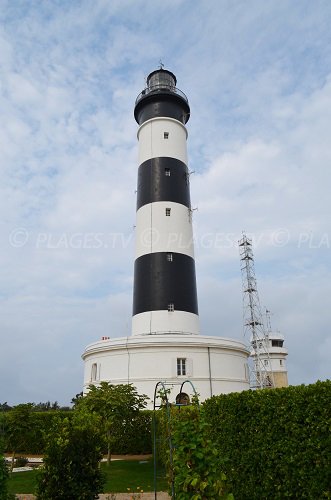
Chassiron Lighthouse
Chassiron lighthouseon the northern point of the island, stands 50 metres high and offers a superb view as well as a museum and exhibitions throughout the year. More than a hundred mills were built on the island but there are not many left. The town Le Gua still has eight: wind (that of Saint Martin), tidal (Chalons) or water (De Chollet), they are the pride of the island.
Remember to go and visit the Fort Louvois maritime fortification of the seventeenth century situated on the rock of Chapus, which can be accessed at low tide by a causeway.
The low houses, whitewashed, with their blue and green shutters!
From the Island of Oléron, you can take a sailing trip to discover Fort Boyard (not a visit tour but the tour can be done by boat). We also have shuttles to the Island of Aix where there are beautiful beaches.

